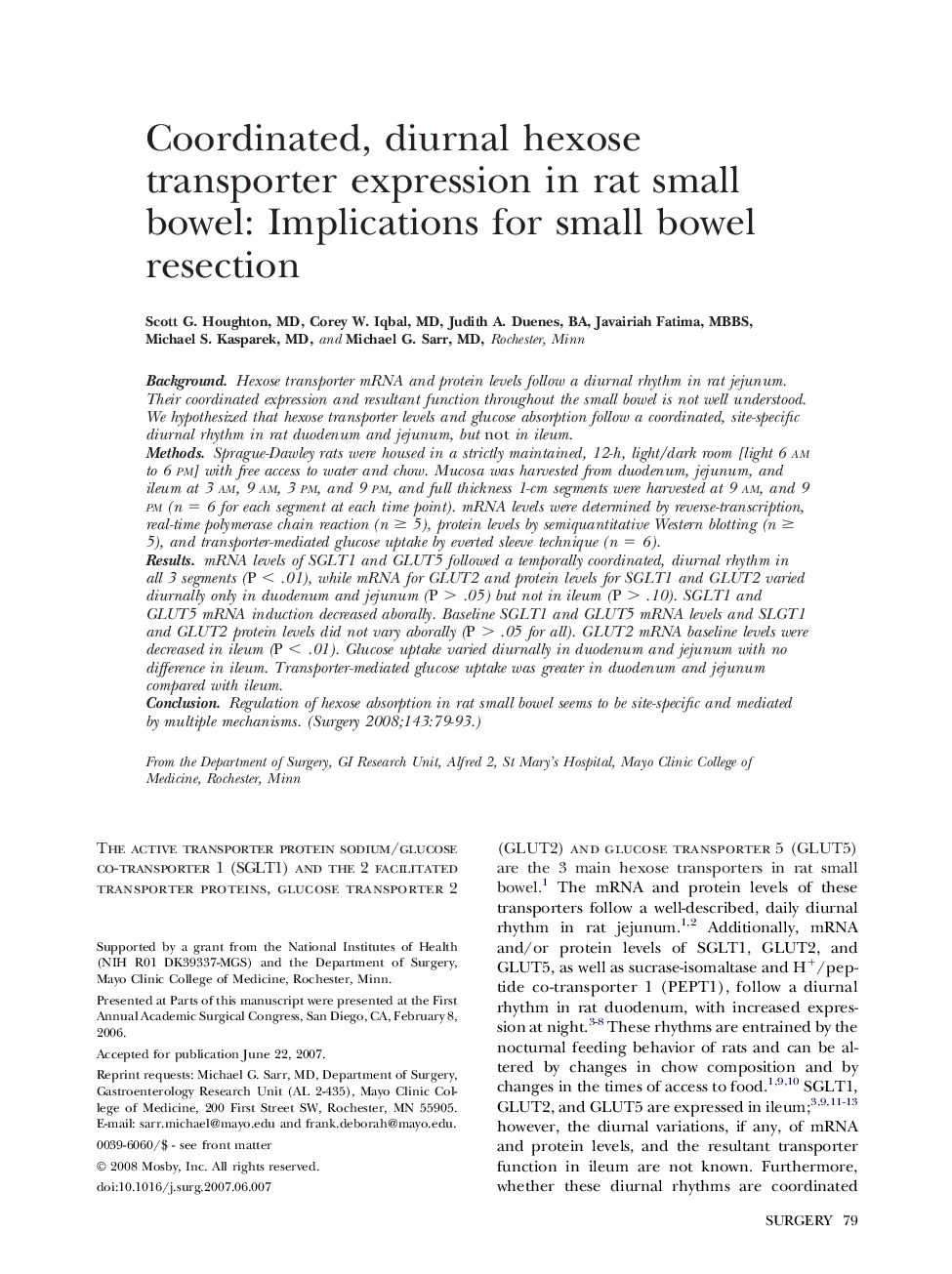| Article ID | Journal | Published Year | Pages | File Type |
|---|---|---|---|---|
| 4308434 | Surgery | 2008 | 15 Pages |
BackgroundHexose transporter mRNA and protein levels follow a diurnal rhythm in rat jejunum. Their coordinated expression and resultant function throughout the small bowel is not well understood. We hypothesized that hexose transporter levels and glucose absorption follow a coordinated, site-specific diurnal rhythm in rat duodenum and jejunum, but not in ileum.MethodsSprague-Dawley rats were housed in a strictly maintained, 12-h, light/dark room [light 6 am to 6 pm] with free access to water and chow. Mucosa was harvested from duodenum, jejunum, and ileum at 3 am, 9 am, 3 pm, and 9 pm, and full thickness 1-cm segments were harvested at 9 am, and 9 pm (n = 6 for each segment at each time point). mRNA levels were determined by reverse-transcription, real-time polymerase chain reaction (n ≥ 5), protein levels by semiquantitative Western blotting (n ≥ 5), and transporter-mediated glucose uptake by everted sleeve technique (n = 6).ResultsmRNA levels of SGLT1 and GLUT5 followed a temporally coordinated, diurnal rhythm in all 3 segments (P < .01), while mRNA for GLUT2 and protein levels for SGLT1 and GLUT2 varied diurnally only in duodenum and jejunum (P > .05) but not in ileum (P > .10). SGLT1 and GLUT5 mRNA induction decreased aborally. Baseline SGLT1 and GLUT5 mRNA levels and SLGT1 and GLUT2 protein levels did not vary aborally (P > .05 for all). GLUT2 mRNA baseline levels were decreased in ileum (P < .01). Glucose uptake varied diurnally in duodenum and jejunum with no difference in ileum. Transporter-mediated glucose uptake was greater in duodenum and jejunum compared with ileum.ConclusionRegulation of hexose absorption in rat small bowel seems to be site-specific and mediated by multiple mechanisms.
